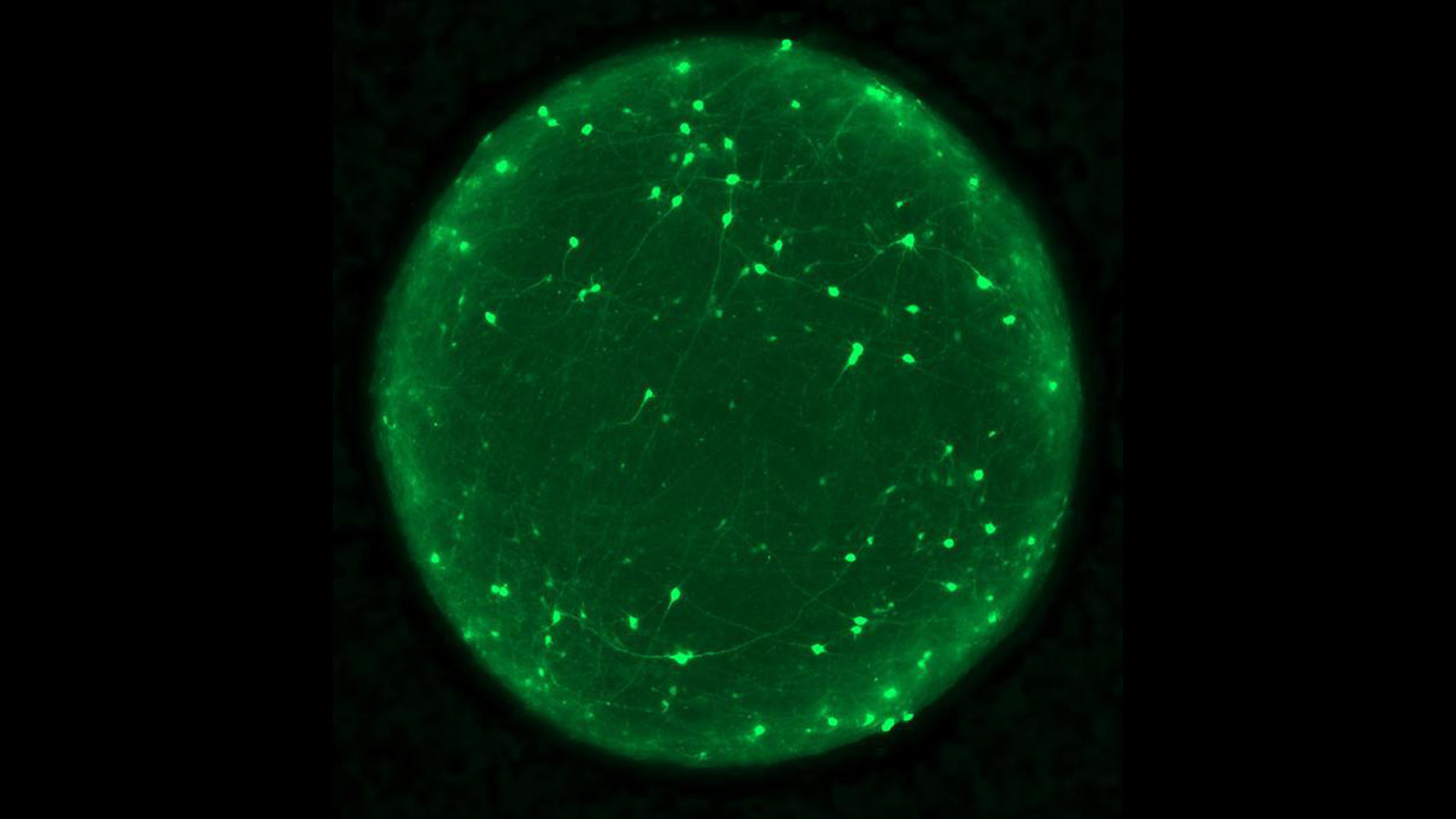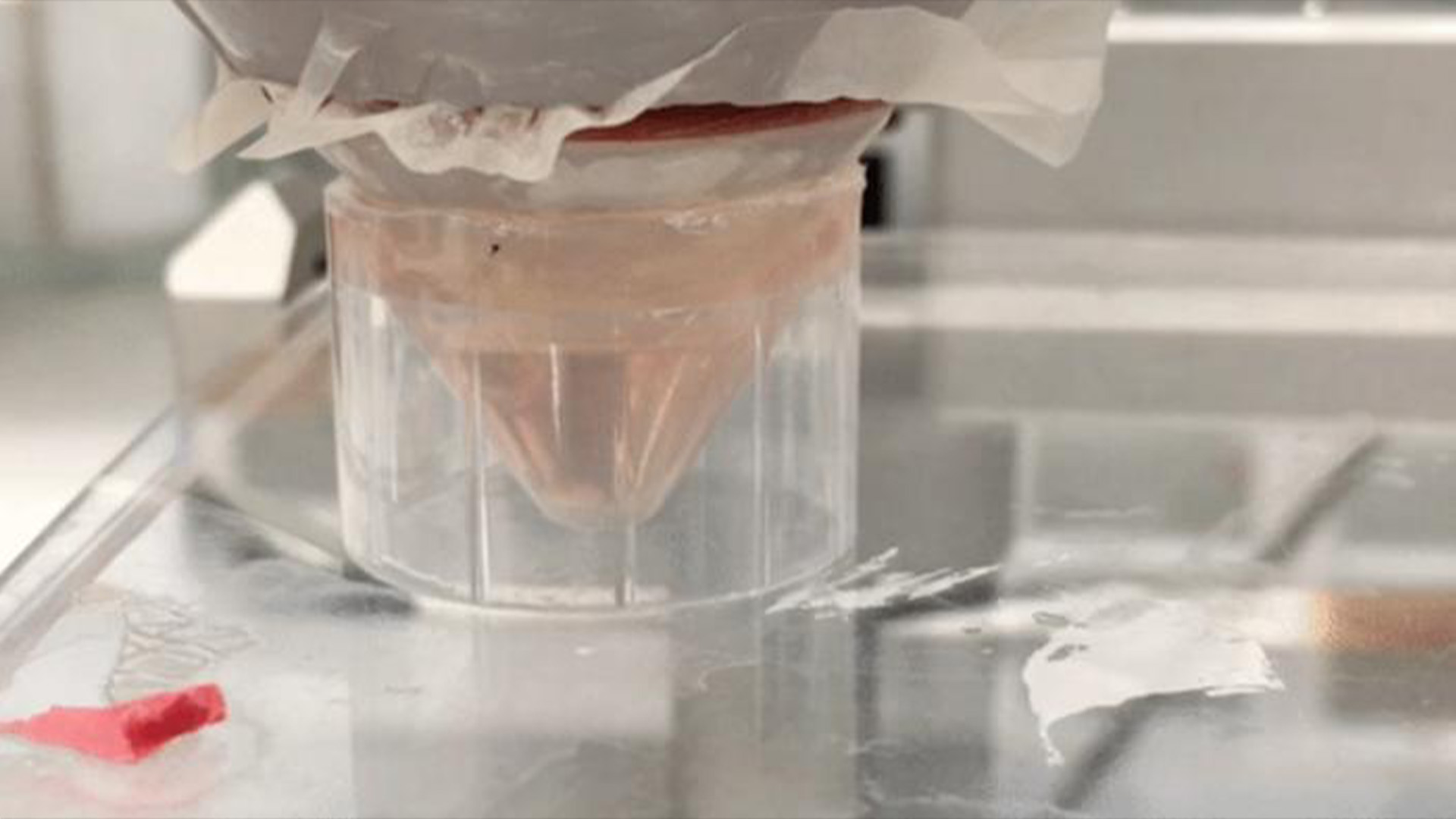
Minibrains grown in the lab may help explain why concussions and other traumatic brain injuries (TBIs) raise people's risk of dementia.
In a new study, published Thursday (April 4) in the journal Cell Stem Cell, scientists reported the results of an experiment in which they blasted these lab-grown models of the human brain — known as cerebral organoids — with high-intensity ultrasonic waves. The waves were intended to mimic damage to brain cells induced by severe traumatic brain injuries.
The research hints at a strategy to block the downstream effects of brain injuries, the study authors reported. In theory, the treatment could be used as either a preventive measure or a therapy given post-injury. However, many more studies are needed before such a treatment could be used in people.
The cerebral organoids used in the study looked like pinhead-sized clumps of brain cells, rather than perfectly miniaturized versions of full-size human brains. That said, organoids capture aspects of human biology that are difficult to study in animals, like lab mice. They can also be grown to include specific types of cells from different regions of the brain, arranged in layers as they would be in a person's head.
Related: Even mild concussions can 'rewire' the brain, possibly causing long-term symptoms
In this study, the researchers grew the organoids from cells collected from healthy human donors and from people with either amyotrophic lateral sclerosis (ALS) or frontotemporal dementia, two types of neurodegenerative disease. Scientists have found that mutations in a gene called C9orf72 raise the risk of both diseases, and in this case, all of the donors carried a mutant copy of that gene.
The cells collected from each group were tweaked in the lab so they reverted into stem cells that could then be coaxed to grow into any type of cell. The researchers blasted the resulting organoids with ultrasonic pulses to mimic some effects of a TBI, including brain cell death and changes in a protein called tau, which is implicated in Alzheimer's disease.
In addition, the team saw changes in a protein called TDP-43, which has been tied to both TBIs and many neurodegenerative diseases in the past. The protein, typically found corralled in the nucleus of healthy cells, is involved in controlling how instructions in DNA are used to make proteins. But in neurodegenerative conditions, TDP-43 accumulates in clumps.
The new research suggests that, following TBI, malfunctioning TDP-43 proteins injure and kill brain cells. Part of the reason these proteins go haywire may be because they've escaped from the nucleus, the team found.

These harmful changes in TDP-43 were more prevalent in the organoids grown from cells of people with ALS or dementia than in those from healthy donors. This hints that, because of this mechanism, TBIs may be especially dangerous to those who already have a genetic risk of dementia.
Next, the team went hunting for ways to prevent or reverse the injuries. "We then tested every gene in the human genome to see if we could rescue that injury by suppressing any individual gene," senior author Justin Ichida, an associate professor of stem cell biology and regenerative medicine at the University of Southern California, said in a statement.
They found a gene for a protein on the surface of cells — KCNJ2 — that, when switched off, provided protection against the effects of TBIs. The researchers tried this in their organoids and in lab mice, finding consistent effects.
"Targeting KCNJ2 may reduce the death of nerve cells after TBI," Ichida said in another statement. "This could have potential as either a post-injury treatment or as a prophylactic [preventative treatment] for athletes and others at high risk for TBI."
But again, more research is needed to move such a treatment from organoids to human patients.
Ever wonder why some people build muscle more easily than others or why freckles come out in the sun? Send us your questions about how the human body works to community@livescience.com with the subject line "Health Desk Q," and you may see your question answered on the website!







